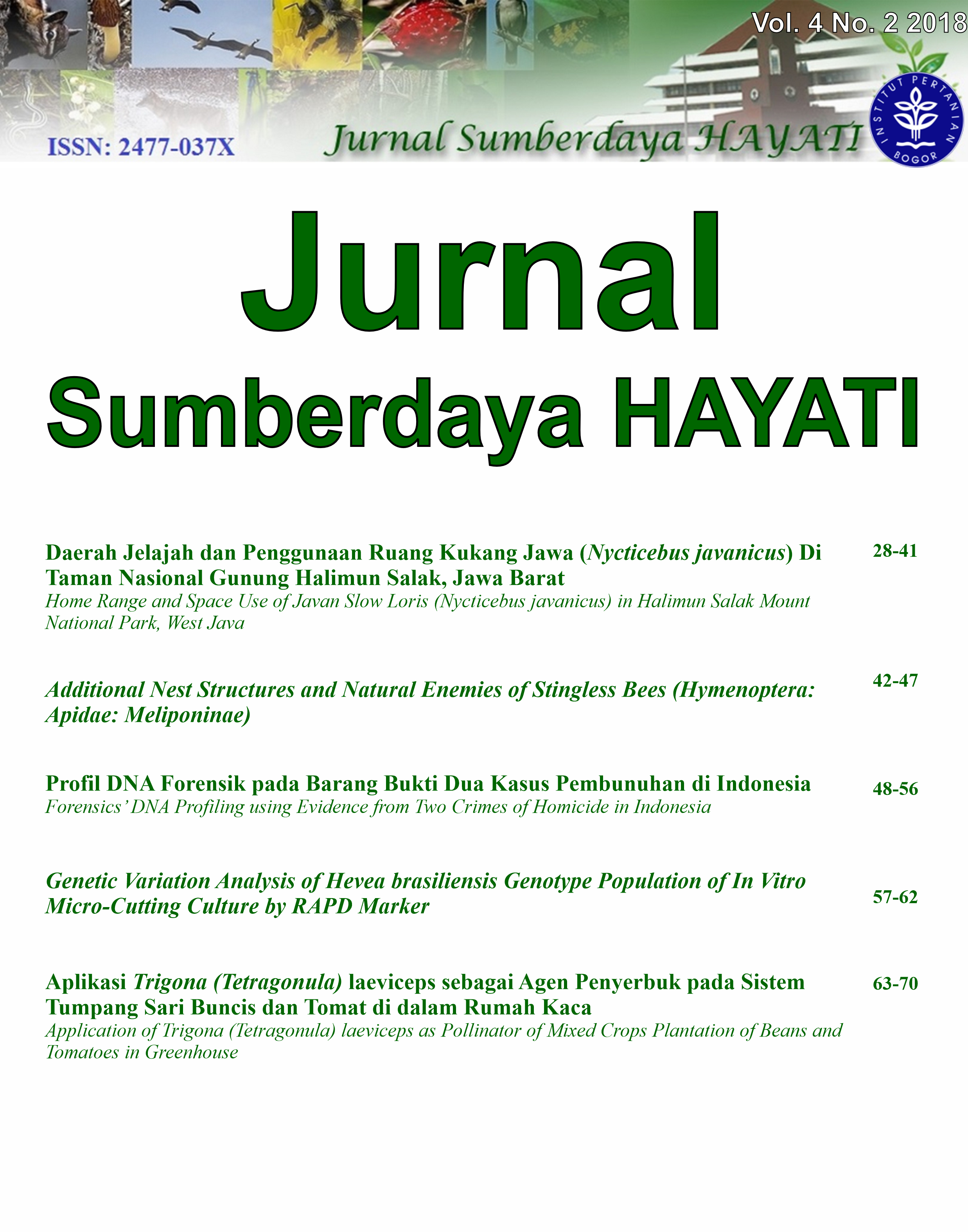Additional nest structures and natural enemies of stingless bees (Hymenoptera: Apidae: Meliponinae)
Abstract
Stingless bees (Hymenoptera: Apidae) are widely distributed in tropics and subtropics areas. Now these bees are farmed by the human because they produce honey and propolis. Natural enemies can disturb the colony that affects to nest structure and productivity of these bees. This study aimed to study the common nest structure and additional nest structure of stingless bees which caused by natural enemies. This research was conducted from August to November 2015. Samples were taken from three locations, i.e, Pasuruan (East Java), Tasikmalaya (West Java), and Rangkasbitung (Banten). Descriptive analysis was used to compare the structure and composition of the nest in bamboo and additional nest structures in relation with natural enemies. Generally, the structure and composition of the nest of stingless bees in bamboo consist of nest entrance, storage pots (honey and pollen), and brood cells. We didn’t found natural enemies of stingless bees in Pasuruan and Tasikmalaya and these colonies did not create additional nest structures. In contrast, the colonies in Rangkasbitung created additional nest structures i.e. the inner entrance covered by batumen and cerumen and also build a root-like structure. Natural enemies found in the colony at Rangkasbitung were cockroaches (Blattodea: Blattidae), histerid beetles, Platysoma leconti (Coleoptera: Histeridae), nitidulid beetles, Carphophilus sp. (Coleoptera: Nitidulidae), and ants, Pheidole sp. (Hymenoptera: Formicidae).
Downloads
Authors who submit and publish with this journal agree to the following terms:
1. Authors retain copyright and grant the journal/publisher non exclusive publishing rights with the work simultaneously licensed under a Creative Commons Attribution 4.0 International License.
![]()













